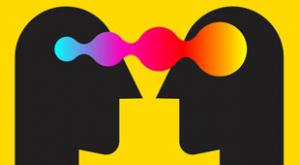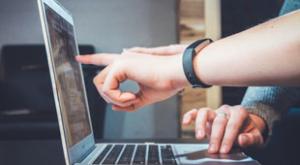All Features

Aaron Krol
As plastic pollution continues to mount, with growing risks to ecosystems and wildlife, manufacturers are beginning to make ambitious commitments to keep new plastics out of the environment. A growing number have signed onto the U.S. Plastics Pact, which pledges to make all plastic packaging…

Kate Zabriskie
‘They’re hit or miss: Sometimes the service is marvelous. Other times it’s simply meh. I’m afraid to recommend the place because I can’t trust them to deliver.”
“Maybe I’m just boring, but I don’t like surprises. They’re great one day and disappointing the next. I don’t need to be delighted. I…

Bryan Christiansen
According to “The 2022 State of Employee Safety Report,” 79 percent of employees say they’re concerned about their health and safety at work. Workplace safety policies along with various technologies can be effective tools for preventing injuries and increasing employee productivity. Overlooking or…

Trupti Dhere
The healthcare industry is known for rapidly adopting advanced technologies that offer improved treatment for various diseases. Consequently, digital twin technology in healthcare has gained popularity during the past few years, owing to the range of advantages it offers.
Digital twin technology…

Meredith Persily, Mark A. Clark
Having good relationships with colleagues is key to building a rewarding and effective work experience. Employees who are engaged with their co-workers, such as reporting “a best friend at work” in Gallup’s well-regarded survey, are more likely to be productive, stay with their organization, and…

Michael Platt
It’s a perfect storm. Just as senior leaders have become overwhelmed with demands and crises too numerous and powerful for any one person, a new study from Korn Ferry and Harvard finds that the majority of teams—so vital to business success—are ineffective. Efforts to improve them, centering on “…

Greg Kihlström
Customer loyalty and lifetime value are highly prized in today’s competitive environment. Smart businesses know that a major point of competitive advantage (or failure) can be the type of customer experience they provide.
The need to balance what customers want with what the business needs to…

Angie Basiouny
Managers who want to keep employees from quitting should consider reordering work tasks, according to a new paper co-authored by Wharton management professor Maurice Schweitzer.
In the largest field study of its kind, Schweitzer and his colleagues found that people are far more likely to quit when…

Tom Taormina
The quality profession has been evolving since the Industrial Revolution. I’ve lived part of this journey since the 1970s and have experienced its effect. ASQ and other organizations have continually pushed the envelope in creating training and certifications in the skill sets we’ve developed over…

Chip Reavley
The business challenges of the past few years—labor shortages, supply chain disruptions, and inflation—have accelerated the long-term trend toward automated packaging operations. All types of manufacturers and distributors, including food and beverage, pharmaceuticals, automotive, and e-commerce…

William A. Levinson
Environmental, social, and governance (ESG) is growing in popularity as a metric to guide investment decisions. What does ESG have to do with productivity, quality, or stakeholders, aka relevant interested parties? The answer is—with the exception of generally accepted practices for workplace…

When MasterControl hosted the Masters Summit 2022 in Salt Lake City, Quality Digest CEO Jeff Dewar was one of the panelists. That gave him a chance to catch up with Jon Beckstrand, CEO of MasterControl, a company which provides its quality management system to more than 1,000 clients, primarily in…

Matt Zajechowski
We spend about one-third of our waking hours at work. That’s often more time than we spend asleep or hanging out with our family and friends. It’s no wonder then that workplaces develop their own languages.
Workplace jargon can help streamline our jobs and bond us to our colleagues. But sometimes…

Etienne Nichols
In a highly regulated industry like medical technology, manufacturing processes must undergo either process verification or process validation to ensure they’re consistently producing the correct result. The question is, which one should you use?
Verification and validation are two different…

Phanish Puranam, Daniel A. Levinthal, Özgecan Koçak
Knowledge-intensive work is quite different from the physical manufacturing work that birthed the corporate hierarchies widely prevalent today. Consider the incompetent Pointy-Haired Boss in the Dilbert comic strip: He can’t lead through wisdom or better information, and he’s unable to control his…

Gleb Tsipursky
Shortly before the layoffs at Salesforce, Marc Benioff, co-founder and co-CEO of Salesforce, sent a companywide Slack message complaining about the low productivity of recent hires made during the pandemic and asked, “Are we not building tribal knowledge with new employees without an office culture…

Julie Davis
If you feel like there are fewer workers to be found these days, rest assured—you are correct. A decrease in the rate of births, declining since the 1970s, coupled with decreasing labor market participation, more job openings, a shortfall of immigrants, and a surge of retirements, is creating a…

Mike Figliuolo
You put a lot of time and energy into leading slackers, but you don’t get anything back in terms of results. Your job as a leader is to figure out what will motivate them to perform.
Slackers are in the lower left corner of the leadership matrix. They have the talent to get work done, but they…

Matt Fieldman
As 2022 came to a close, I was as amazed as I am every year by all the “___ of the Year” lists. It seems like every media outlet creates its own list of the year’s 10 best books, and then there’s the Sherwin-Williams Color of the Year, the Merriam-Webster Word of the Year, and so on.
This got me…

Harry Hertz
It all started with my bathroom sink. I noticed that it was draining slowly, and that I could pull out the pop-up stopper. It was no longer attached to the lever that raised and lowered it. A look into the cabinet below the sink revealed that the ball socket and lever had become loose, freeing the…

Anil More
It’s been decades since air gauging came into existence, and many changes and refinements have been made over the years. It has proved itself as a reliable and accurate method of gauging parts, particularly in cases of close tolerances and fine finishes. Its high accuracy, simplicity, and…

Jon Munnery
When choosing to spend money, customers will likely investigate the brand behind the name to get an idea of whom they’re building ties with as well as an impression of service quality. Customer reviews must point to a genuine interaction with the company to be valuable and influence purchasing…

Megan Wallin-Kerth
It’s old news, but since 2019 the U.S. now has three times its former number of remote workers. Furthermore, an astounding 97.6 percent of employees want that option to remain at least partially on the table for the remainder of their careers.
But how compatible is this with the American work…

Rick Gould
The World Economic Forum’s annual meeting last month saw the launch of new guidance to support the logistics industry on its journey to net-zero emissions. Davos attendees got a first glimpse into how companies can better understand and track their logistics emissions. Released by the Smart Freight…

Dirk Dusharme @ Quality Digest
One of the biggest problems when reading about any kind of innovation in the press is the prevalent assumption that everyone understands the topic and how it works. Whether it’s cloud computing, edge computing, cold fusion, controlled fusion, or recently, artificial intelligence (AI), experts and…